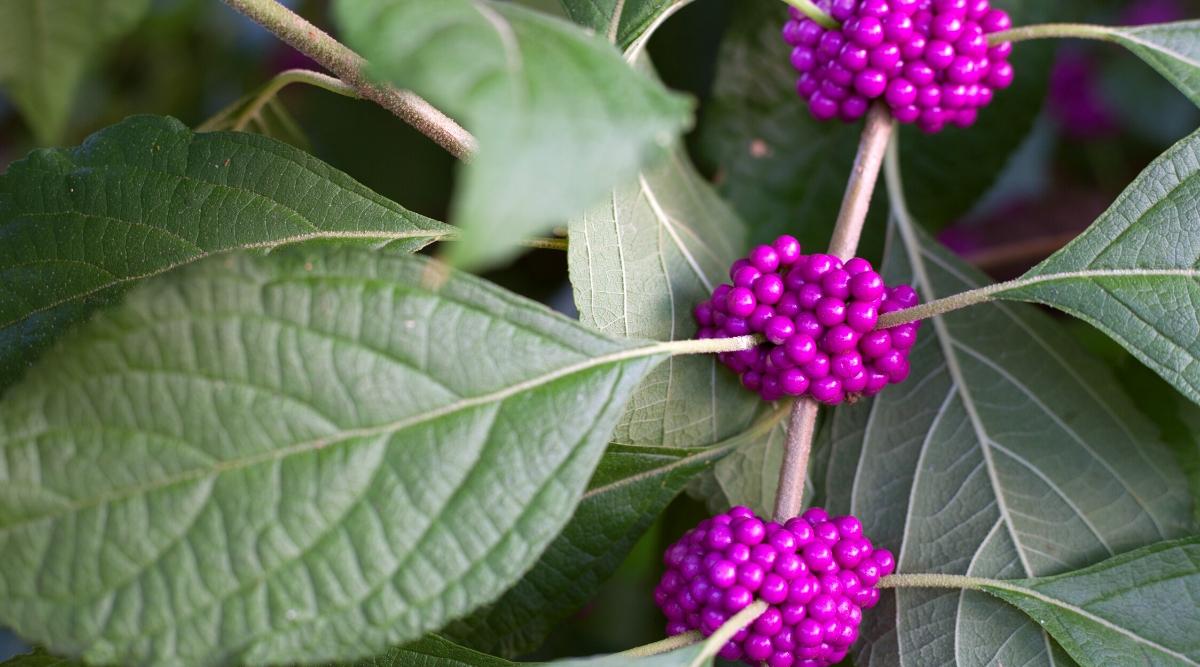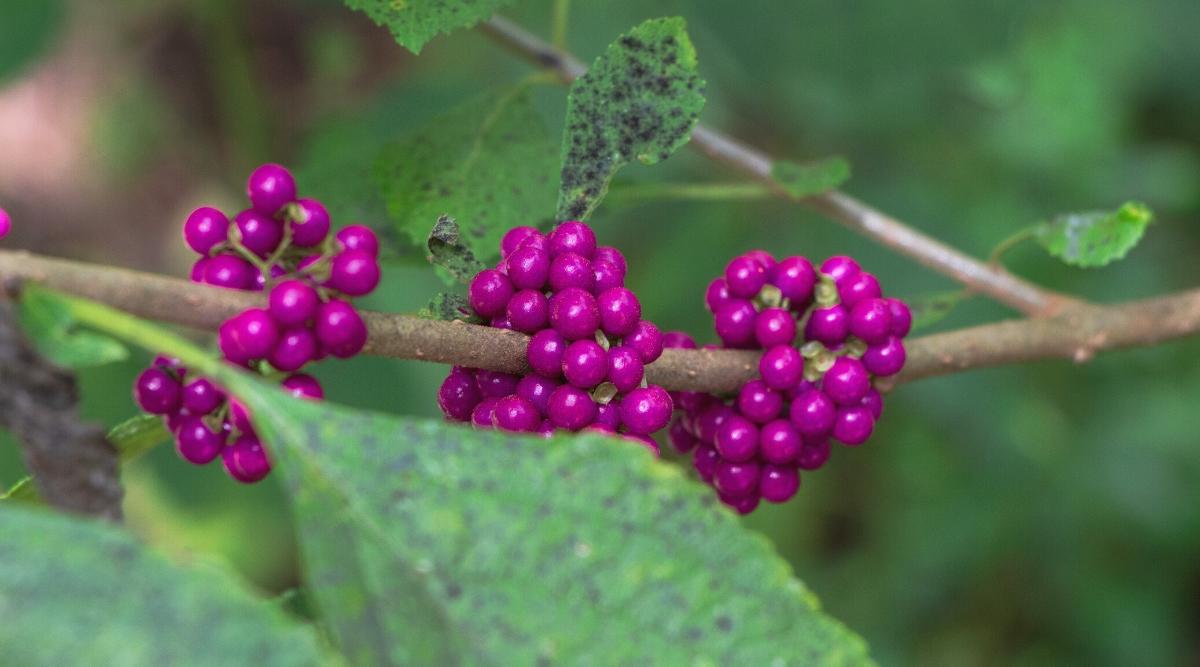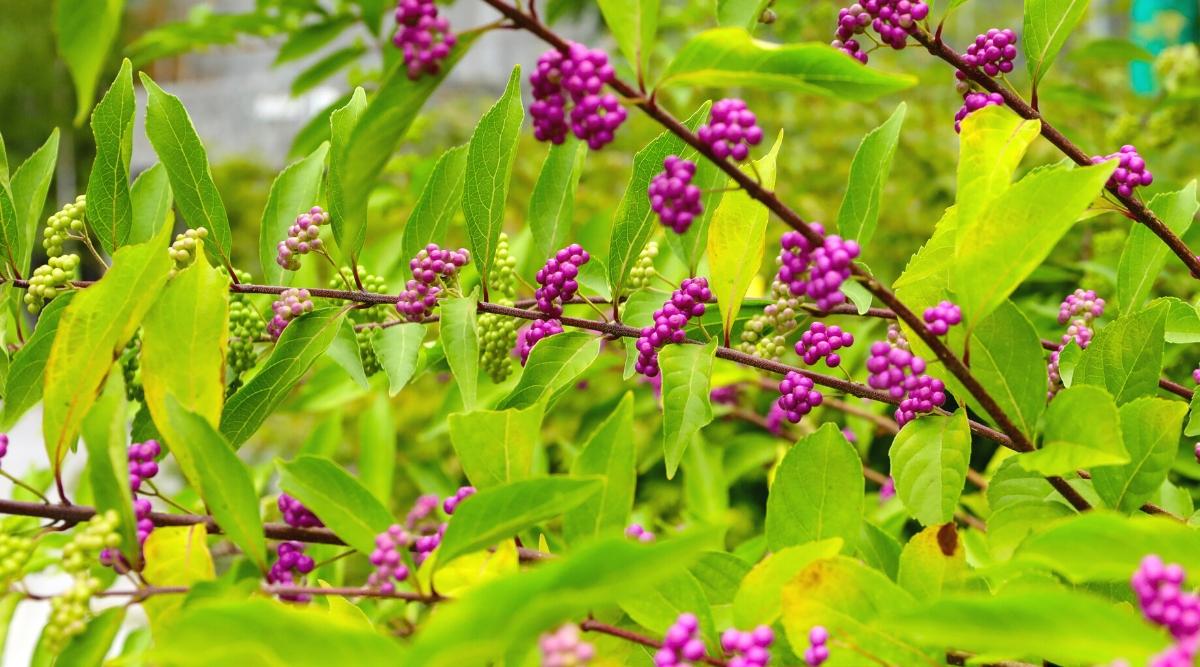Looking for a fast-growing, attractive, and wildlife-friendly shrub? You may have never heard of the American beautyberry (Callicarpa americana), but it checks all the boxes. This U.S. native shrub not only boasts of the mint family’s fragrance but also exhibits exceptional drought tolerance and produces beautiful purple berries each fall, sometimes numbering up to 10 feet in just one season!
The botanical name for this captivating shrub is Callicarpa americana, and it thrives in USDA Hardiness Zones 6 to 11. It’s a genus under Callicarpa, featuring moderate to tall heights and drought-tolerant properties. Let’s delve into the world of beautyberries to learn more!
Botanical Name: Callicarpa americana
Sun Requirement: Full Sun to Partial Shade
Hardiness Zones: USDA Zones 6 to 11
Genus: Callicarpa
Water Needs: Moderate; Drought Tolerant
Soil Needs: Wide range of soils; Well-draining
Plant Type: Deciduous woody shrub
Height: 4 to 7 feet tall
Pet Toxicity: No; crushed leaves may cause dermatitis in some humans
Bloom Colors: Pink, White, Lavender
Spacing: 5 to 6 feet apart
Attracts: Bees, Birds, Butterflies
This native shrub has saw-toothed leaves, lilac flower clusters, and purple berries, making it an excellent choice for wildlife enthusiasts and gardeners alike.

American beautyberries are moderately sized woody perennials, commonly found in the central and southeastern United States, Bermuda, and Cuba. They also thrive in certain regions of Mexico.
Other names for this plant include American mulberry, French mulberry, sour-bush, bunchberry, and purple beauty-berry. It spreads and forms dense thickets with leaves of saw-toothed margins. The flowers, which distinctly encircle the stem, bloom in clusters from May to June. Purplish berries, about the size of currants, develop in close proximity to the stem and ripen from August to October.
The genus name, Callicarpa, is derived from the Greek words “kallos,” meaning beauty, and “karpos,” meaning fruit. There are approximately 20 species in the genus, but only the American beautyberry (Callicarpa americana) is native to the U.S.
When crushed, the leaves of beautyberries emit a strong fragrance, acting as a natural mosquito repellent and deterring other insects due to the presence of callicarpenal and intermedeol. Early 20th-century herbalists used to crush beautyberry leaves and rub them on their bodies to prevent attacks from biting bugs. People also utilized the leaves in their bedding to repel mosquitoes and other insects. Today, American beautyberries are planted in hedgerows, native plantings, and pollinator gardens.
These plants are easy to care for and propagate through cuttings, making them a popular choice for an ornamental shrub that enhances biodiversity in gardens, natural landscapes, and pollinator gardens.
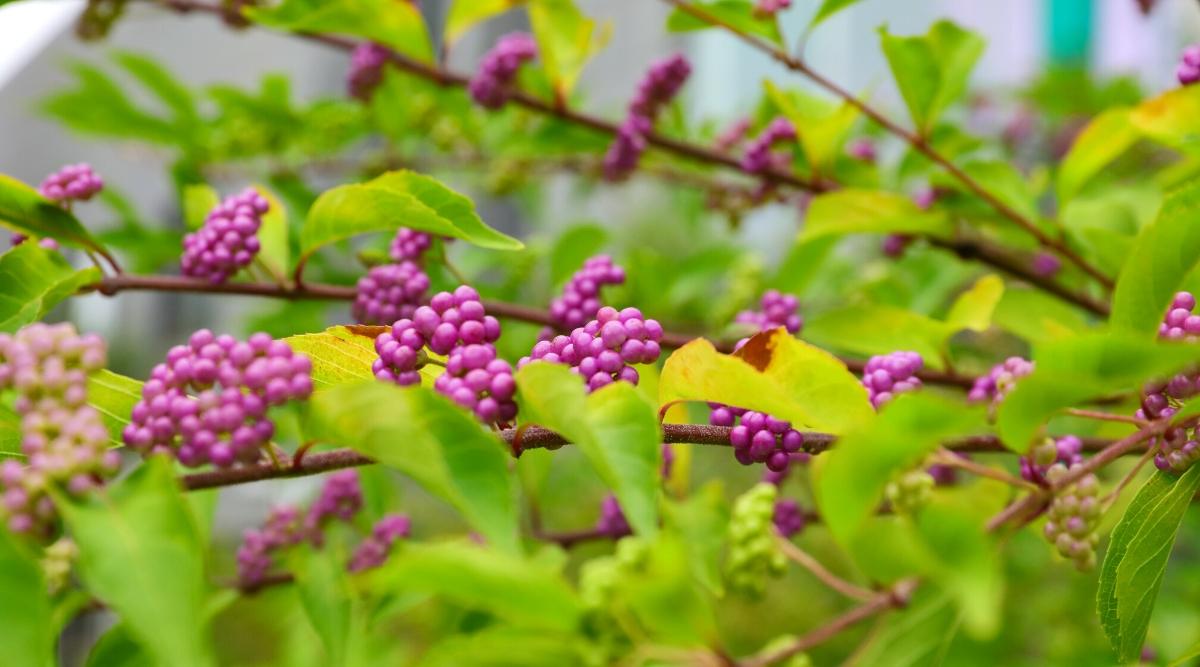

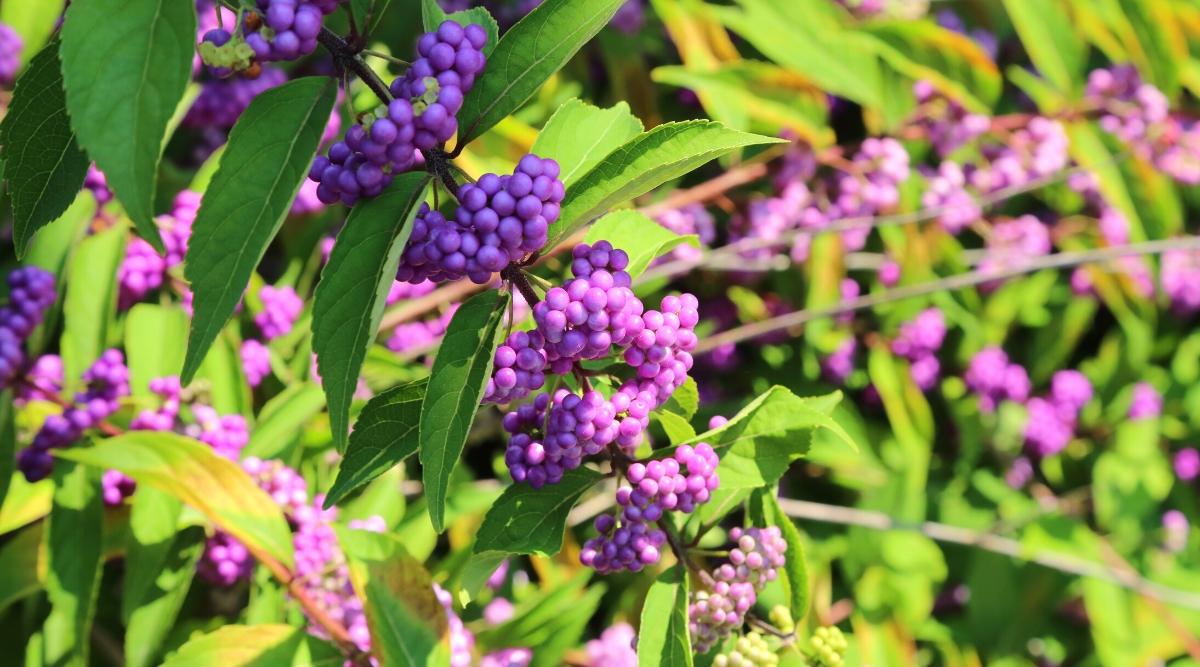
You can practically purchase this plant at nurseries as a small shrub. Plant beautyberries at least 5 to 6 feet apart to ensure adequate spacing between plants.
The shrub is quite adaptable to various soil types, thriving in almost any type of soil as long as it is well-draining, so there’s no need to amend the soil unless you are planting in a particularly waterlogged site.
Seeds can be sown in the fall or early spring. However, stratification (a cold period) is generally not required.
Once established, this shrub is easy to grow and care for, with minimal maintenance and pruning required each year.
American beautyberries thrive in full to partial sun, receiving 4 to 6 hours of direct sunlight daily.
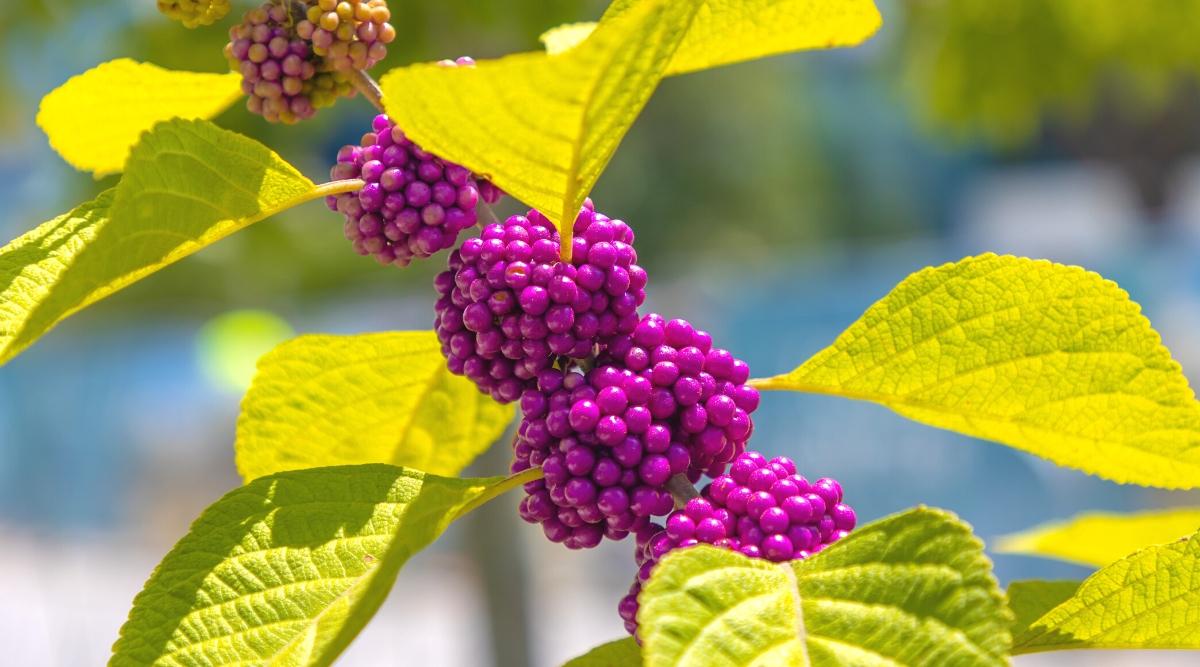
This gorgeous shrub requires full sun to partial sun locations and benefits from at least 4 to 6 hours of direct sunlight per day. In warmer climates, the shrub may appreciate a bit of shade to prevent scorching by the sun.
Avoid planting it in full shade because it won’t thrive. Beautyberries may sometimes grow in the shade, but they won’t flower and fruit as prolifically as they would in a sunnier spot.
This native shrub is moderately water-wise and can tolerate drought conditions once established.

This is a fairly drought-tolerant native shrub with moderate rainfall needs. It will also thrive in well-draining soils and can adapt to various moisture conditions.
Moreover, it adapts well to various well-drained soil types.

This native beautyberry tolerates nearly any soil type as long as it is well-draining. It can also adapt to a wide range of soil pH levels, thriving in soils with pH ranging from 4.8 to 7.0.
Beautyberries prefer warmer zones and are well-suited for USDA zones 7 to 11, where they can readily adapt to colder climates within these zones.
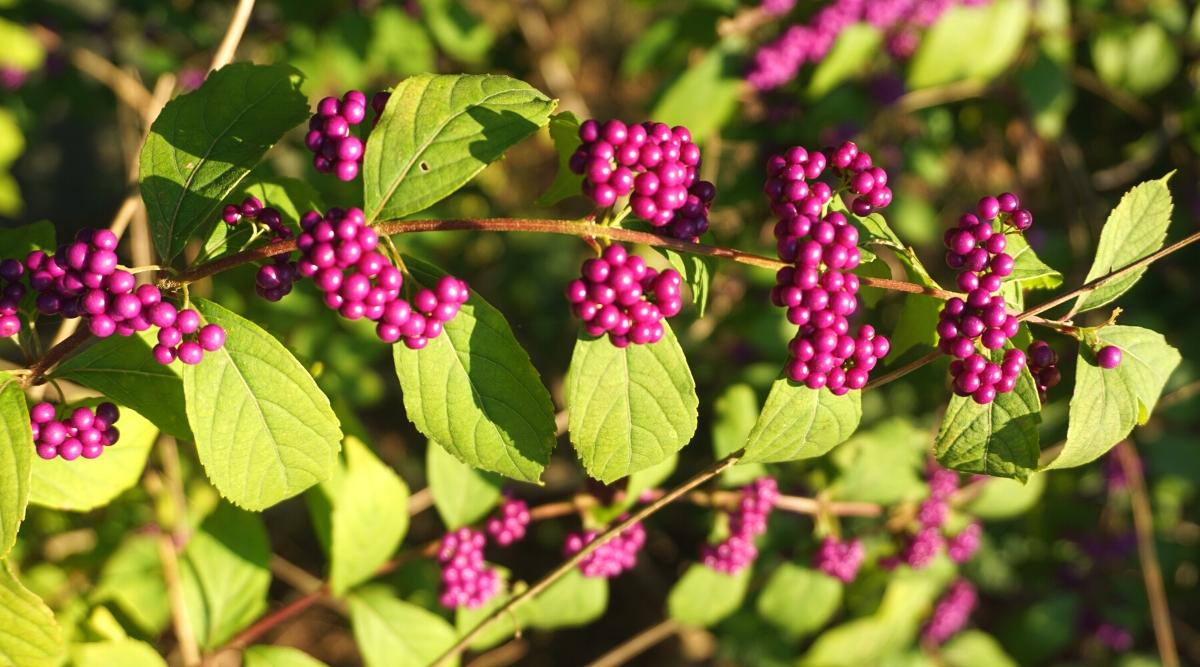
This genus of shrubs prefers warmer growing zones. The shrubs are winter-hardy in USDA zones 7 to 11, but in some cases, they can survive in USDA zone 6.
Species of beautyberry in the Callicarpa genus, such as C. japonica, C. dichotoma, and C. bodinieri, are adapted to colder climates, specifically up to zone 5.
Generally, the foliage of beautyberry does not tolerate frost well, so the shrub is usually deciduous in colder climates. Some older branches and canes may survive over winter, but extensive dieback might occur. Therefore, it’s advisable to avoid over-fertilization and pruning late in the growing season to prevent encouraging new growth that may not have enough time to harden before winter.
